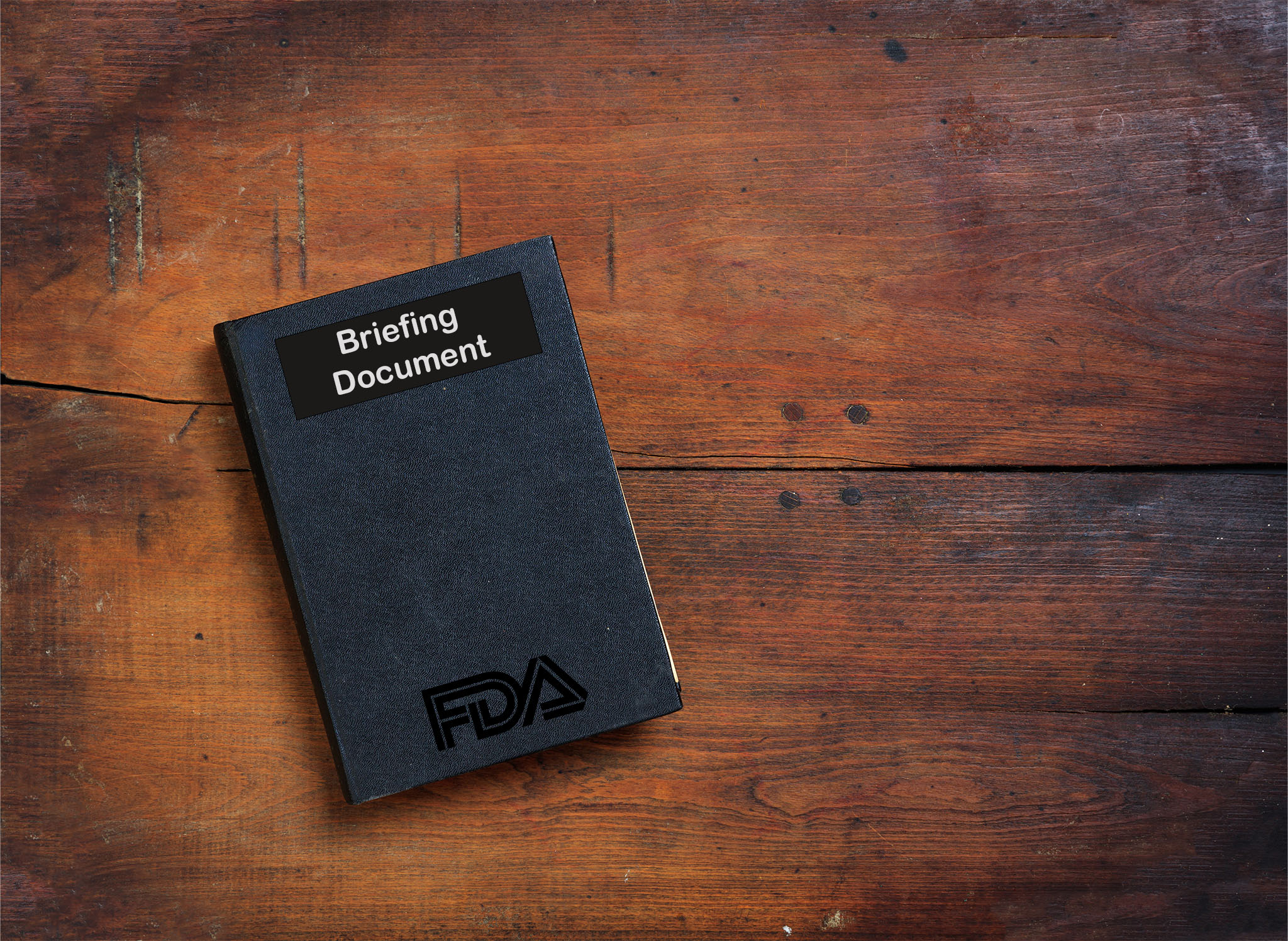Want to Succeed at Your FDA Advisory Committee Meeting? Don’t Ignore the Power of a First Impression
by Lara Burgess & Lee Mullin

Like most first impressions, the sponsor facing an FDA Advisory Committee has one chance to make a great one. In this case, that chance occurs before the meeting.
We are talking about the all-important, but often underappreciated, sponsor briefing document.
The briefing document gives the committee the first peek at the sponsor’s data and is the sponsor’s first opportunity to convince the committee that their product is safe and effective for its intended use.
The sponsor’s presentation and answers to the committee’s questions are critically important—and may be the focus of preparations. However, committee members receive briefing documents from the sponsor and the FDA nearly three weeks before the meeting. The briefing document not only makes that ever-important first impression about a product, but it also sets the tone for the day of the meeting.
This is why the organization, writing, and content of the sponsor’s briefing document matter as much as any other part of your preparation. The briefing document should tell a clear, credible, and concise story, supported by data. This takes focus, effort, and expertise.
At 3D Communications, we have spent the last 20 years helping companies prepare for and achieve success at FDA Advisory Committee meetings. Here is some practical advice for sponsors on how to develop a briefing document that positions the sponsor for success before the meeting ever starts.
First, know your audience. Most committee members are busy physicians and academicians who have little time to read the documents, much less retain information. Most will read the FDA’s briefing document first, and then read some of the sponsor’s document1. So, the key is to make the document as short, simple, and interesting as possible, and structure it in a way that makes it easy for the reader to absorb and remember the information.
Tell the main story in the executive summary. Research tells us that the executive summary is likely the main section members will read. That’s why we recommend dedicating 15 to 20 pages to this section, depending on the complexity of the issues. The executive summary should summarize the key messages AND provide a topline message on the strengths and shortcomings of the product. The best way to earn the committee’s trust is by being fully transparent. This means the sponsor should also identify key concerns they anticipate from the FDA, since these issues will of course be discussed in the FDA’s briefing document and during the meeting. Burying the potential negatives at the end of the document—or leaving them out entirely—simply undercuts the sponsor’s credibility and reduces committee trust.
Keep the briefing document brief—and organized. Overwhelmingly, committee members prefer a briefing document that is less than 100 pages1. In addition to being concise, an effective briefing document is written to help the reader easily navigate to key sections using cross links. We recommend using the executive summary to capture essential information that the sponsor wants everyone to read, the body of the document for what some may read, and the appendix for details that may be of interest to one or two committee members (for example, detailed statistical methods that would be difficult to address in Q&A). It is also important to remember that the committee may have different concerns than the FDA and ensure that these are also addressed in the briefing document.
Use call-out boxes to emphasize key take-aways. Summary boxes are a great way to highlight the key messages and data—and help readers remember them. These messages should be consistent with those presented to the committee on the day of the FDA Advisory Committee meeting.
Leverage charts and graphs to bring messages to life. A picture is worth a thousand words. Charts and graphs make messages crystal clear and help keep readers engaged by breaking up paragraphs of text. We recommend using many of the same images in the briefing document and the presentation at the FDA Advisory Committee meeting. This increases the likelihood that the committee will understand the data in sponsor’s slides since they’ve already seen them in the sponsor briefing document.
Write clearly. It should go without saying, but if a reader must read a sentence or paragraph more than once to understand it, then it is probably not clear enough. Just as with the spoken word, the sponsor should aim for short sentences, active language, and clear writing. The data may be complicated; the writing shouldn’t be.
Remember, the briefing document lives on—long after the meeting is over. Unlike most documents submitted to the FDA, the briefing document gets posted on the FDA’s website, for anyone to see. Patients can, and often will, read the sponsor’s briefing document—which means the sponsor should use patient-centric language and patient-preferred terminology when describing the disease state. The sponsor should also consider whether there is any potentially proprietary or preliminary information they might not yet want in the public domain.
The bottom line: A briefing document gives the sponsor a controlled environment to clearly convey data and messages before the FDA Advisory Committee meeting. A well-written briefing document is the sponsor’s one chance to make a great first impression.
Reference
1. Burgess, L., Cox V., Regeer, B. (2015, May 15). Retrieved from Regulatory Focus: https://www.raps.org/news-and-articles/news-articles/2015/5/what-influences-cder-advisory-committee-members